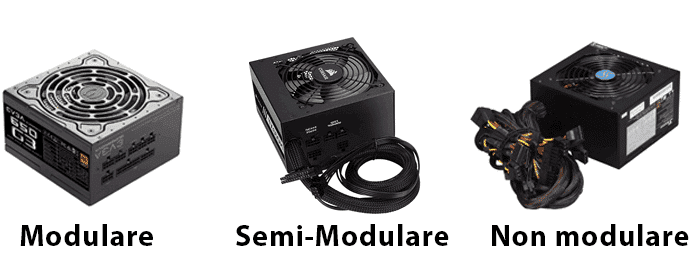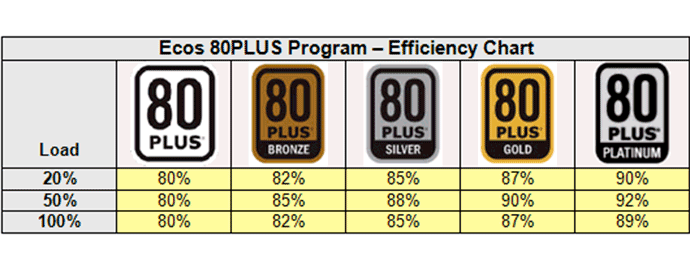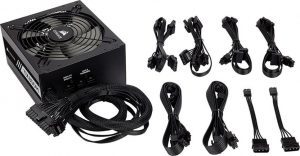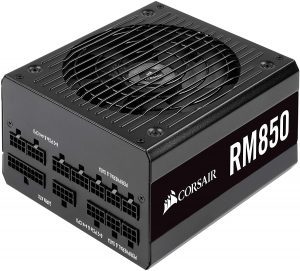Modular or non-modular, which power supply to choose, and what are the differences?
When configuring computers, one of the most frequently asked questions is "which power supply to buy"?
The Power Supply Unit, or more briefly PSU, is the fundamental element of every configuration because it is responsible for the correct energy supply of the components of our PC .
There are many types of power supplies, but certainly the first distinctions to make concern: energy efficiency , form factor and type of power supply . You are ready? Let's go together and tackle all the aspects just listed individually.
Let's start with the simplest element to choose, the form factor. What is meant by this term? When we read ATX on a technical sheet we must keep in mind that it is the acronym that indicates the standard dimensions of the components, i.e. those used in most desktop computers.
If we are looking for smaller dimensions, a step below ATX, we have mini-ITX: whose components are usually used for mini PCs . The intermediate level, halfway between ATX and mini-ITX, is covered by the formats called micro-ATX.
From now on it will be easy to understand that if we are faced with standard hardware we will have to use power supplies for ATX formats , while for smaller cases those of the SFX or even TFX type.

Modular or non-modular, which power supply to choose?
This choice is very personal, it depends partly on our aesthetic taste and partly on the budget we intend to invest. Non-modular power supplies were those that in the past were often supplied together with the chassis.
Recognizing a non-modular power supply is simple, this is made up of a series of fixed cables connected to it that protrude from its casing. The main disadvantage is that often not all of these output power cables are used, some may remain abandoned there. To avoid this problem the solution is to purchase a modular power supply .
In reality, there are also intermediate solutions which, coincidentally, are the most widespread: we are talking about so-called "semi-modular" power supplies.
A semi-modular PSU only has a fixed cable relating to the main power supply, the remaining accommodations will be "components" , that is, to be used according to our energy needs.
The inside of the case, with such a solution, will be: more spacious, extremely tidy, and without unnecessary excess cables.
Now you understand why modular and semi-modular power supplies have a higher cost on average and are among the most requested. 
The efficiency classes of the power supply
Computers with a powerful hardware configuration require more energy resources than those intended for office use. Here it becomes essential to choose a PSU that is sufficient in terms of watts and, at the same time, that guarantees a good level of efficiency.
Efficiency is evaluated as a percentage and is calculated by considering the amount of energy absorbed by the electrical outlet and that consumed by the hardware components connected to the computer.
You may have often seen the acronyms “80 PLUS” while you were choosing a power supply. This standard was designed to certify efficiency . There are tables to which we can refer, each of them corresponds to stamps: 80 PLUS, Bronze, Silver, Gold and Platinum .

The higher we go in the ranking, the better the performance will be and, consequently, the higher the cost of our power supply.
The silence factor is also an aspect not to be underestimated . The PSU must be cooled to ensure proper operation. A model certified with the 80 PLUS standard gives off less heat than a similar but non-certified model.
As regards heat dissipation we have two possibilities: the classic solutions use a cooling fan , but on the market we can purchase "fanless" power supplies, i.e. with passive heat dissipation .

Other parameters to evaluate before purchasing a power supply unit may include the safety codes, here are some:
How to choose the power of the power supply?
It is necessary to estimate the energy requirements of the components that will be assembled inside the desktop computer. There are various automatic solutions available online that perform the necessary calculations for us, as long as we are able to provide them with all the details relating to the configuration in use.
Here are some sites from which we can obtain the necessary watts of our new power supply:
1- Outervision
2- Coolermaster
3- BeQuiet
 Conclusions
Conclusions
The power supply is the final component, to be chosen carefully only after having established the ideal and definitive configuration of our computer . Its task is to provide the right energy to the entire system, which is why its power cannot be decided with eyes closed, but must be calculated specifically, from time to time.
Traditional desktop solutions generally use power supplies of less than 600w of power. Gaming computers , on the other hand, are those that require more energy resources due to the high performance of their hardware components, such as processors and video cards. In the latter scenario our power supply could easily exceed 850w .
Another aspect to reflect on is efficiency, a model that complies with 80 PLUS standards is more reliable than a non-certified model.
Let's not forget the form factor which is related to the physical dimensions of the PSU: in fixed computers we must refer to ATX type formats.
At this point all that remains is to choose whether the power supply model we want must be modular or not. The advice is to move towards an intermediate solution, i.e. a semi-modular model, both for economic and aesthetic-functional reasons.







